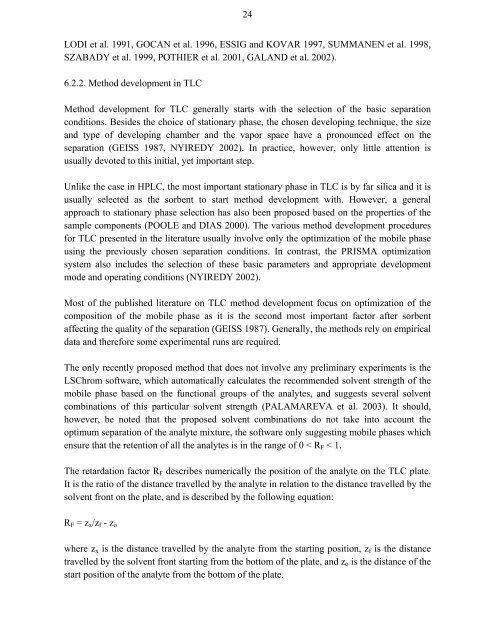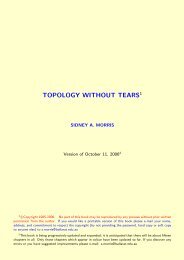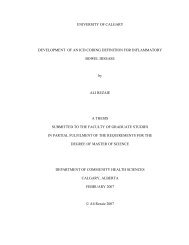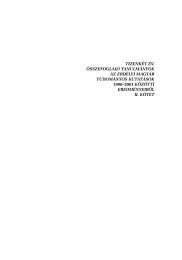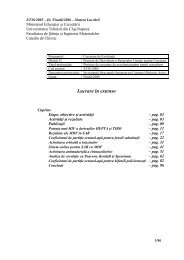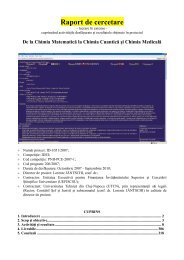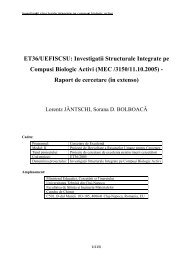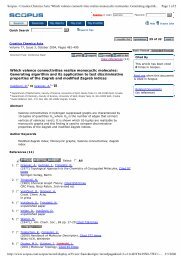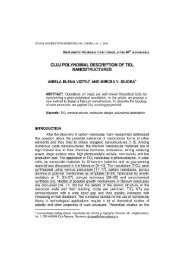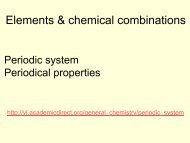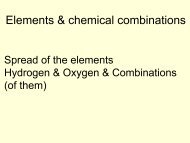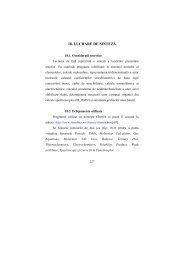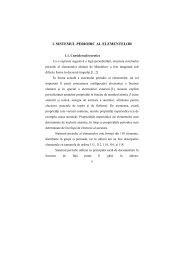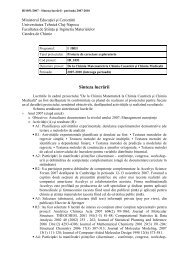Extraction and Planar Chromatographic Separation Techniques in the
Extraction and Planar Chromatographic Separation Techniques in the
Extraction and Planar Chromatographic Separation Techniques in the
Create successful ePaper yourself
Turn your PDF publications into a flip-book with our unique Google optimized e-Paper software.
24<br />
LODI et al. 1991, GOCAN et al. 1996, ESSIG <strong>and</strong> KOVAR 1997, SUMMANEN et al. 1998,<br />
SZABADY et al. 1999, POTHIER et al. 2001, GALAND et al. 2002).<br />
6.2.2. Method development <strong>in</strong> TLC<br />
Method development for TLC generally starts with <strong>the</strong> selection of <strong>the</strong> basic separation<br />
conditions. Besides <strong>the</strong> choice of stationary phase, <strong>the</strong> chosen develop<strong>in</strong>g technique, <strong>the</strong> size<br />
<strong>and</strong> type of develop<strong>in</strong>g chamber <strong>and</strong> <strong>the</strong> vapor space have a pronounced effect on <strong>the</strong><br />
separation (GEISS 1987, NYIREDY 2002). In practice, however, only little attention is<br />
usually devoted to this <strong>in</strong>itial, yet important step.<br />
Unlike <strong>the</strong> case <strong>in</strong> HPLC, <strong>the</strong> most important stationary phase <strong>in</strong> TLC is by far silica <strong>and</strong> it is<br />
usually selected as <strong>the</strong> sorbent to start method development with. However, a general<br />
approach to stationary phase selection has also been proposed based on <strong>the</strong> properties of <strong>the</strong><br />
sample components (POOLE <strong>and</strong> DIAS 2000). The various method development procedures<br />
for TLC presented <strong>in</strong> <strong>the</strong> literature usually <strong>in</strong>volve only <strong>the</strong> optimization of <strong>the</strong> mobile phase<br />
us<strong>in</strong>g <strong>the</strong> previously chosen separation conditions. In contrast, <strong>the</strong> PRISMA optimization<br />
system also <strong>in</strong>cludes <strong>the</strong> selection of <strong>the</strong>se basic parameters <strong>and</strong> appropriate development<br />
mode <strong>and</strong> operat<strong>in</strong>g conditions (NYIREDY 2002).<br />
Most of <strong>the</strong> published literature on TLC method development focus on optimization of <strong>the</strong><br />
composition of <strong>the</strong> mobile phase as it is <strong>the</strong> second most important factor after sorbent<br />
affect<strong>in</strong>g <strong>the</strong> quality of <strong>the</strong> separation (GEISS 1987). Generally, <strong>the</strong> methods rely on empirical<br />
data <strong>and</strong> <strong>the</strong>refore some experimental runs are required.<br />
The only recently proposed method that does not <strong>in</strong>volve any prelim<strong>in</strong>ary experiments is <strong>the</strong><br />
LSChrom software, which automatically calculates <strong>the</strong> recommended solvent strength of <strong>the</strong><br />
mobile phase based on <strong>the</strong> functional groups of <strong>the</strong> analytes, <strong>and</strong> suggests several solvent<br />
comb<strong>in</strong>ations of this particular solvent strength (PALAMAREVA et al. 2003). It should,<br />
however, be noted that <strong>the</strong> proposed solvent comb<strong>in</strong>ations do not take <strong>in</strong>to account <strong>the</strong><br />
optimum separation of <strong>the</strong> analyte mixture, <strong>the</strong> software only suggest<strong>in</strong>g mobile phases which<br />
ensure that <strong>the</strong> retention of all <strong>the</strong> analytes is <strong>in</strong> <strong>the</strong> range of 0 < RF < 1.<br />
The retardation factor RF describes numerically <strong>the</strong> position of <strong>the</strong> analyte on <strong>the</strong> TLC plate.<br />
It is <strong>the</strong> ratio of <strong>the</strong> distance travelled by <strong>the</strong> analyte <strong>in</strong> relation to <strong>the</strong> distance travelled by <strong>the</strong><br />
solvent front on <strong>the</strong> plate, <strong>and</strong> is described by <strong>the</strong> follow<strong>in</strong>g equation:<br />
RF = zx/zf - zo<br />
where zx is <strong>the</strong> distance travelled by <strong>the</strong> analyte from <strong>the</strong> start<strong>in</strong>g position, zf is <strong>the</strong> distance<br />
travelled by <strong>the</strong> solvent front start<strong>in</strong>g from <strong>the</strong> bottom of <strong>the</strong> plate, <strong>and</strong> zo is <strong>the</strong> distance of <strong>the</strong><br />
start position of <strong>the</strong> analyte from <strong>the</strong> bottom of <strong>the</strong> plate.


